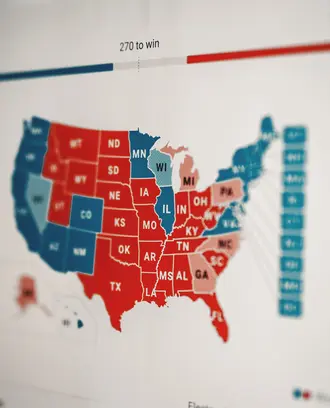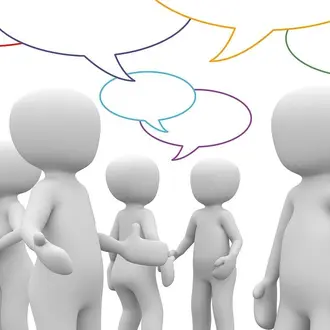Behavioral Economics
Measuring voters’ knowledge of political news: MIT Sloan research finds variations across age, gender, race and socioeconomic status
The findings have implications for the role that information inequality plays in shaping policy
Cambridge, Mass., October 20, 2020—Amidst an unprecedented election year and a news cycle that includes multiple overlapping crises, new research from the MIT Sloan School of Management reveals a yawning information gap in Americans’ knowledge of political news. Charles Angelucci, Assistant Professor of Applied Economics at MIT Sloan, and Andrea Prat of Columbia University, identify inequalities in voters’ awareness of news stories across age, gender, race, partisan preference and socioeconomic status. The study’s findings have implications for the role that information inequality plays in shaping U.S. policy.
“The news you consume and what you know about recent political events affects the way you think, behave, and vote,” says Prof. Angelucci. “Our findings show that what you know depends a lot on who you are.” Age is the single biggest determinant of how knowledgeable voters are about political news, according to the study, which is being published as a working paper. The study also finds that minorities are significantly less likely to know the main news stories of the month. The most conversant voters tend to fall into the 50-70 age group, with wealthy, educated, white men over the age of 47 being the best-informed. The least-informed voters are young, low-income, minority women.
For the study, the researchers first devised a protocol for identifying the most important news stories: each month, a panel of U.S. journalists selected what they deemed to be the top three national stories about the federal government. Next, the researchers created a quiz to measure whether voters were aware of those stories. The quiz consisted of six statements, three of which described real news articles and three of which described plausible but ultimately false stories written by the panel of reporters.
The researchers then partnered with YouGov, the polling group, to ask voters to pick out the three stories that were true. The survey was conducted 11 different times between December 2018 and June 2020; nearly 8,000 individuals from all walks of life participated to create a representative sample of the US adult population. Lastly, the researchers devised a new methodology to estimate voters’ knowledge using their performance on the quiz. The method’s strength lies in its ability to disentangle the various factors that may affect an individual’s awareness of a given story: a person’s general level of knowledge and political preferences, the salience of a story (and other contemporaneous stories), and the slant of a story, among others.
The researchers find that the typical voter knows 1.3 of the three most important news stories of the month. About 64% of voters know the most important story (as determined by the journalists); the share of voters who know the second and third most important stories falls to 37% and 32%, respectively. Although these figures may seem low, they are significantly higher than what previous studies suggested.
The research team also document large variations across socioeconomic groups, with the wealthiest group over 14 percentage points more likely to know the typical story compared to the least-wealthy group.
Partisanship plays a key role, as well. Voters are 10-30% less likely to know stories unfavorable to their political party. The researchers found, too, that the effect of partisanship on knowledge isn’t higher for older stories, suggesting that people engage in selective exposure rather than selective memory. Additionally, the researchers find that Americans are pretty good at distinguishing true from fake stories: very few individuals believe false news stories.
“A direct link exists between how much voters know about the news and the attention those voters receive from politicians,” says Prof. Angelucci. “When people are well-informed about the policies their elected leaders implement, elected officials have a greater incentive to cater to those voters’ preferences and increase their odds of reelection. Thus, they are motivated to skew their policies towards better-informed voters—wealthier, older white men —and pay little attention to uninformed voters.”
The upshot, he says, is an unhealthy sign for democracy. “Inequalities in news knowledge reinforce other inequalities.”
About the MIT Sloan School of Management
The MIT Sloan School of Management is where smart, independent leaders come together to solve problems, create new organizations, and improve the world. Learn more at mitsloan.mit.edu.



